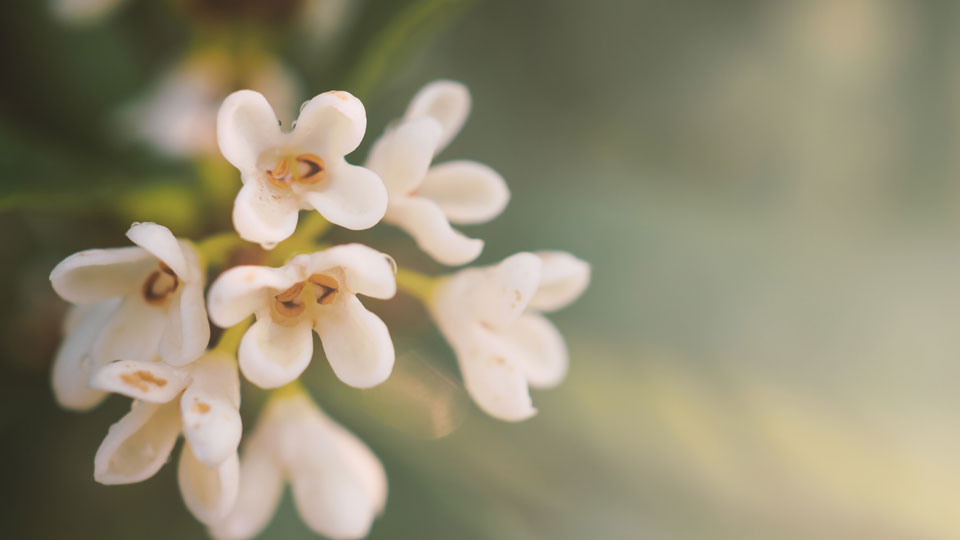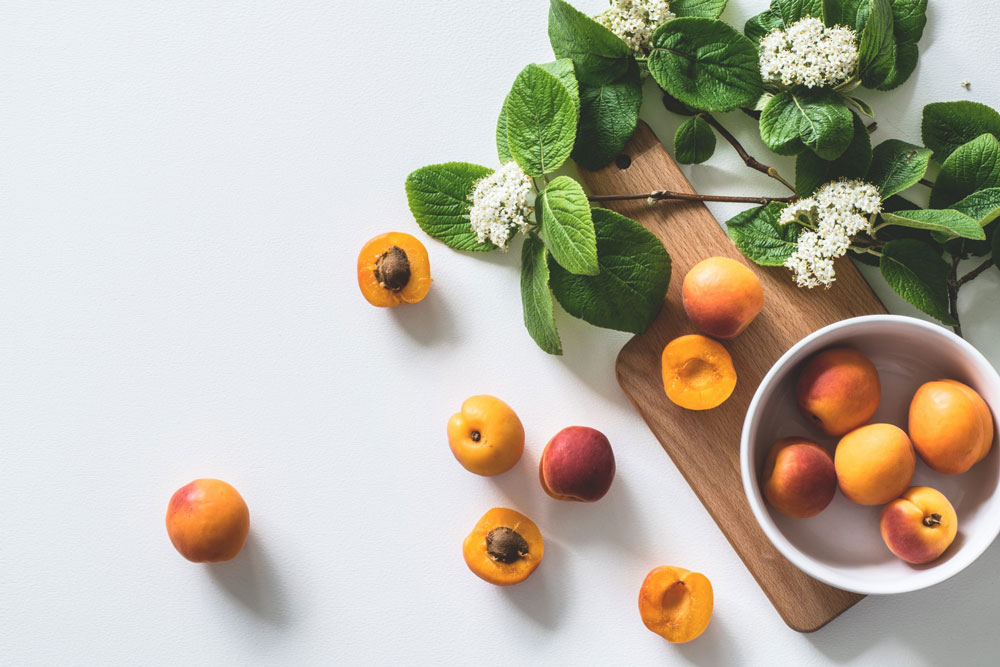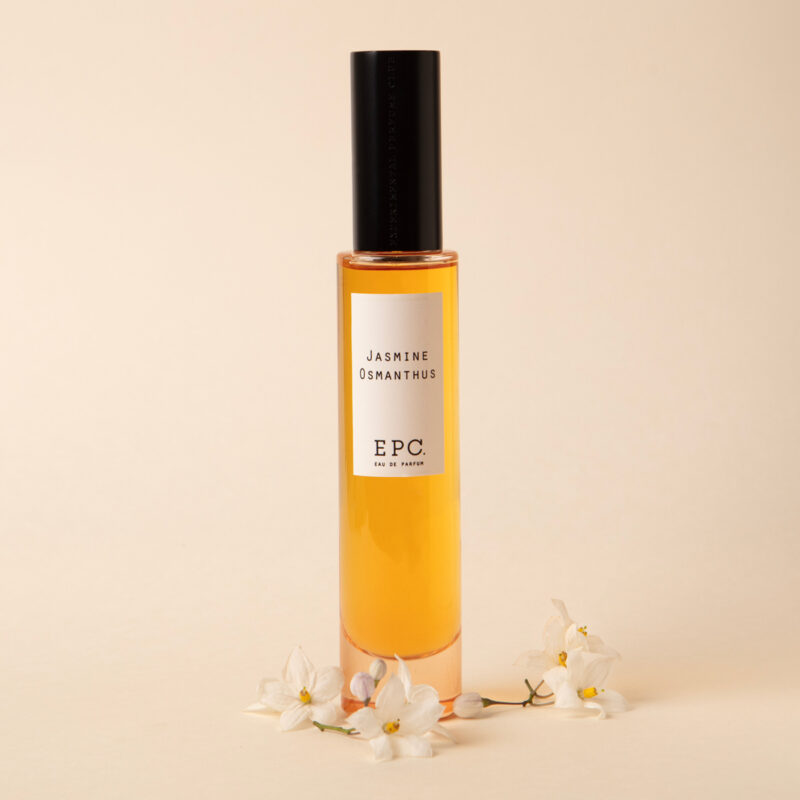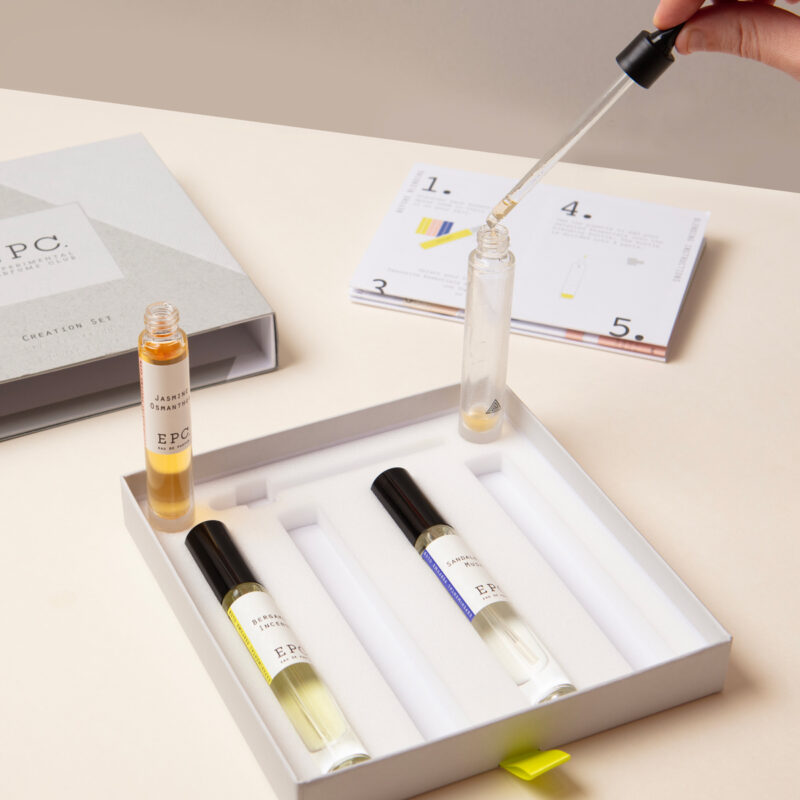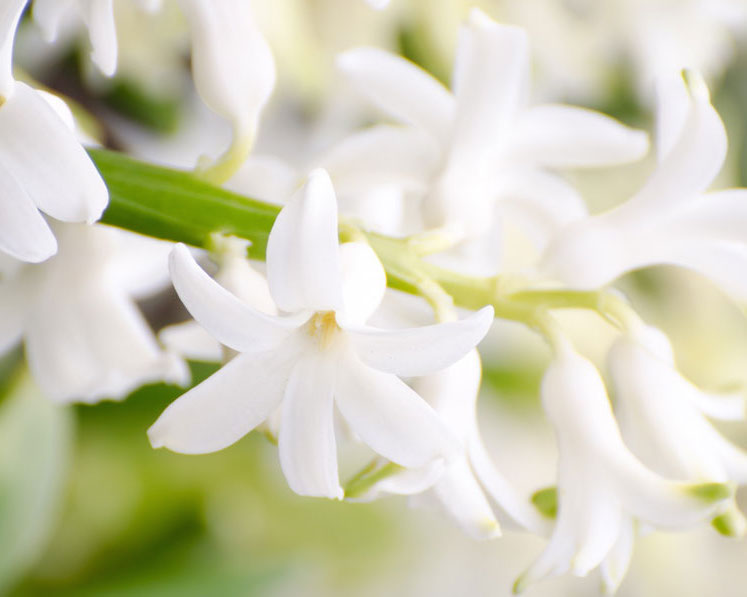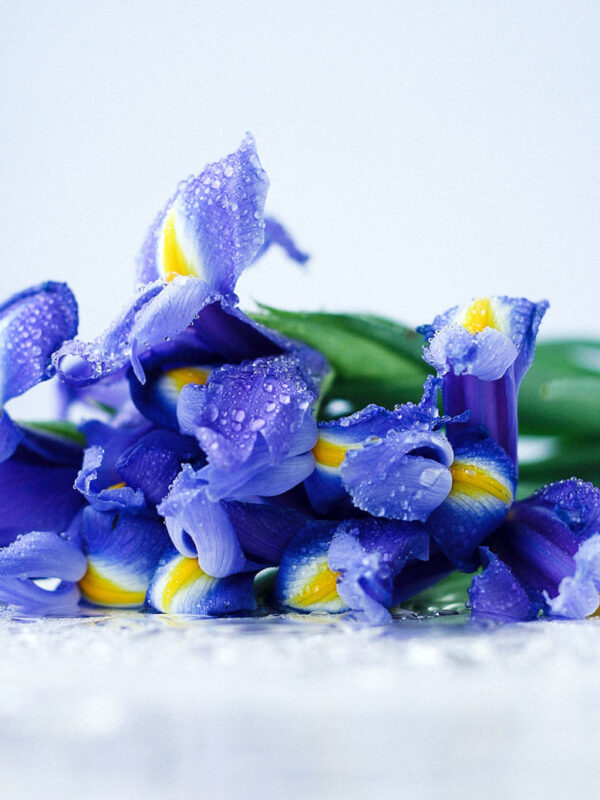A mouth-watering, honeyed, apricot-peachy note, often used in perfumery to obtain a kind of floral fuzziness, a palpable softness akin to the skin of the velvety fruits.
The History of Osmanthus
Osmanthus has always seemed like such a romantic flower to us, so it was no surprise to learn that they are traditionally used as wedding flowers in Taiwan. In the language of flowers, they carry the meaning of love and romance, symbolising true love and faithfulness. Even in perfumery they evoke a kind of gentle, intimate, honeyed floral scent that speaks of closeness.
Used much more prolifically in the Far East, osmanthus is a lesser known smell to the West. It is the emblem flower of Hangzhou in China. Osmanthus is a well-loved ingredient in cooking, and is used for flavouring sugars and honeys as well as in osmanthus-scented jam. It is also consumed as a tea in Chinese medicine as it is believed to have qualities that can improve skin, detoxify the body and boost lung health.
Tiny blooms that adorn larger trees, they have either a silvery-white, yellow or golden-orange flowers. The golden-orange flowers are most used in perfumery as they’re said to produce the best scent from extraction. The higher concentration of carotenoids in their chemical make-up contributes to their more vivid orange colour as well as to making their fragrance richer.
Osmanthus In Perfumery
Osmanthus absolute is an expensive perfumery raw material but a well-loved one, nonetheless, due to its unique olfactory profile. Not a heady scent or one that announces itself rather it is an enveloping ingredient that brings a smile to one’s face. It sings of spring, happiness and joy – its combination of ripe sun-kissed apricots, soft suede and creamy floral notes is quite irresistible to the nose.
Osmanthus has a mouth-watering, honeyed, apricot-peachy top note, often used in perfumery to obtain a kind of floral fuzziness and a palpable softness akin to the skin of the velvety fruits. But it is far from a one-trick pony: with notes of plums, prunes and an undercurrent of leather-suede, it is a perfect addition to a soft leather scents. It also has a luscious creamy facet and thus, pairs well with lactonic flowers, like tuberose, gardenia and frangipani – which is exactly why we paired it with jasmine and frangipani in our Jasmine / Osmanthus eau de parfum.

